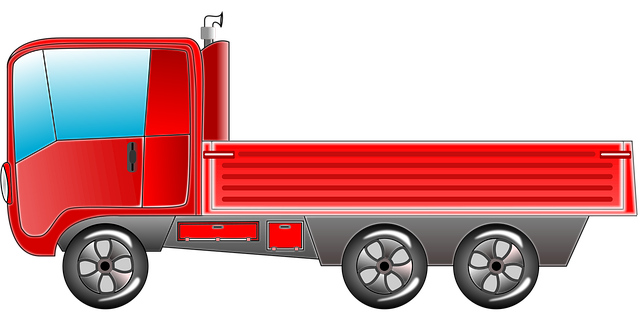Looking to register your car in California? This comprehensive guide walks you through the process, ensuring compliance with state requirements. From understanding essential documents needed, including a VIN (vehicle identification number) verifier, to choosing convenient registration methods online or in-person—we’ve got you covered. Learn how to pay fees and submit your application effortlessly. Streamline the process today!
- Understand California Car Registration Requirements
- Gather Necessary Documents for Vehicle Registration
- Verify Vehicle's VIN (Vehicle Identification Number)
- Choose a Registration Method: Online or In-Person
- Pay California Car Registration Fees and Submit Application
Understand California Car Registration Requirements

Before registering your car in California, it’s crucial to understand the state’s specific requirements. Every vehicle, whether new or used, must undergo a comprehensive inspection process that includes both a visual assessment and a verification of its Vehicle Identification Number (VIN). This VIN inspection is a critical step to ensure the car meets safety standards and has not been reported as stolen.
California utilizes a variety of methods for car registration, including in-person visits to the Department of Motor Vehicles (DMV) and mobile VIN inspection services. If you opt for a mobile service, a trained professional will come to your location to perform the VIN verification using specialized tools. This convenient alternative can save time compared to waiting at a DMV office. Always ensure that the service provider is reputable and licensed to offer these services.
Gather Necessary Documents for Vehicle Registration

Before heading to the California Department of Motor Vehicles (DMV) to register your car, make sure you have all the essential documents. The process involves several key steps, and having everything ready ensures a smoother experience. Start by obtaining the Vehicle Identification Number (VIN) from your vehicle. This unique code can be found on the vehicle’s registration certificate or in its manual. A VIN verifier is a valuable tool for this task, especially if you’re using a mobile option, which allows for quick and convenient verification.
Additionally, gather important paperwork such as proof of ownership (a title document), insurance documents, and your valid driver’s license. For out-of-state residents, an out-of-state registration or a letter from the previous state’s DMV showing that you’ve disposed of the old registration may be required. These documents play a crucial role in the registration process, ensuring that all legal requirements are met.
Verify Vehicle's VIN (Vehicle Identification Number)

Before you begin the registration process, it’s crucial to verify your vehicle’s Vehicle Identification Number (VIN). This unique 17-character code is a critical component in identifying your car and ensuring its authenticity. You can easily confirm the VIN by checking the vehicle’s certificate of sale, insurance documents, or asking the previous owner for the details.
For convenience, consider using a mobile vin verifier service that allows you to input the VIN through your smartphone, providing instant validation. This method, often offered by specialized apps, is a quick and efficient way to ensure your car’s registration details are accurate, saving time and potential headaches during the California vehicle registration process.
Choose a Registration Method: Online or In-Person

When registering your car in California, you have two primary options for submitting your application: online or in-person. Both methods are acceptable and designed to cater to different preferences and circumstances. If you’re tech-savvy and prefer a quick, paperless process, opting for an online registration is ideal. This method allows you to complete the entire procedure from the comfort of your home, saving time and effort by eliminating the need for visits to DMV offices.
On the other hand, if you’d like a more personalized approach or require assistance with document verification, visiting a DMV office in person can be advantageous. Moreover, some individuals may opt for a mobile vin verifier or conduct a vin inspection to ensure all information is accurate before submitting their registration, which adds an extra layer of precision, especially when transferring ownership or dealing with older vehicles that may have undergone previous modifications.
Pay California Car Registration Fees and Submit Application

After verifying your vehicle’s eligibility for registration through a VIN inspection or mobile VIN verifier, the next step is to pay the associated fees. California charges a base fee for car registration, which covers state and local taxes. Additional fees may apply based on factors like the type of vehicle, emissions standards, and whether you’re renewing online or in-person. You can typically pay these fees online through the California Department of Motor Vehicles (DMV) website, by mail, or at a DMV field office.
Once you’ve paid the registration fees, it’s time to submit your application. This involves completing an application form, providing necessary documentation like proof of insurance and vehicle ownership, and ensuring that all information is accurate and up-to-date. For convenience, many residents opt for mobile VIN inspection or a mobile VIN verifier service to streamline the process from the comfort of their homes.
Registering a car in California involves understanding key requirements, gathering essential documents, verifying the Vehicle Identification Number (VIN) using a reliable VIN verifier, choosing between online or in-person registration, and paying applicable fees. By diligently navigating these steps, you’ll ensure your vehicle’s compliance with state regulations, facilitating a smooth and legal driving experience on California’s roads.
